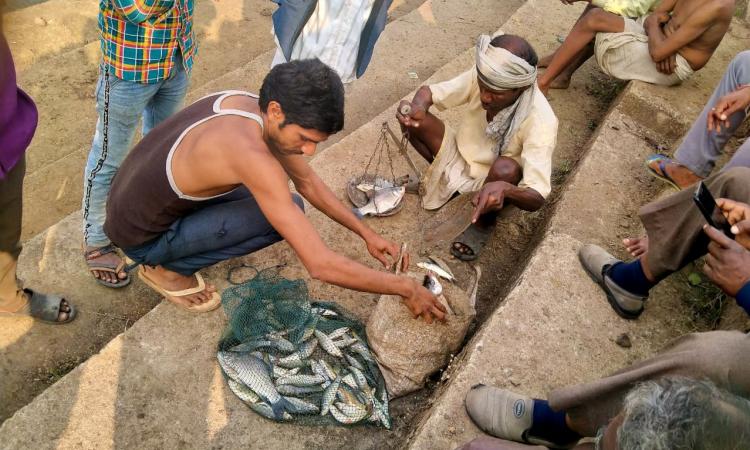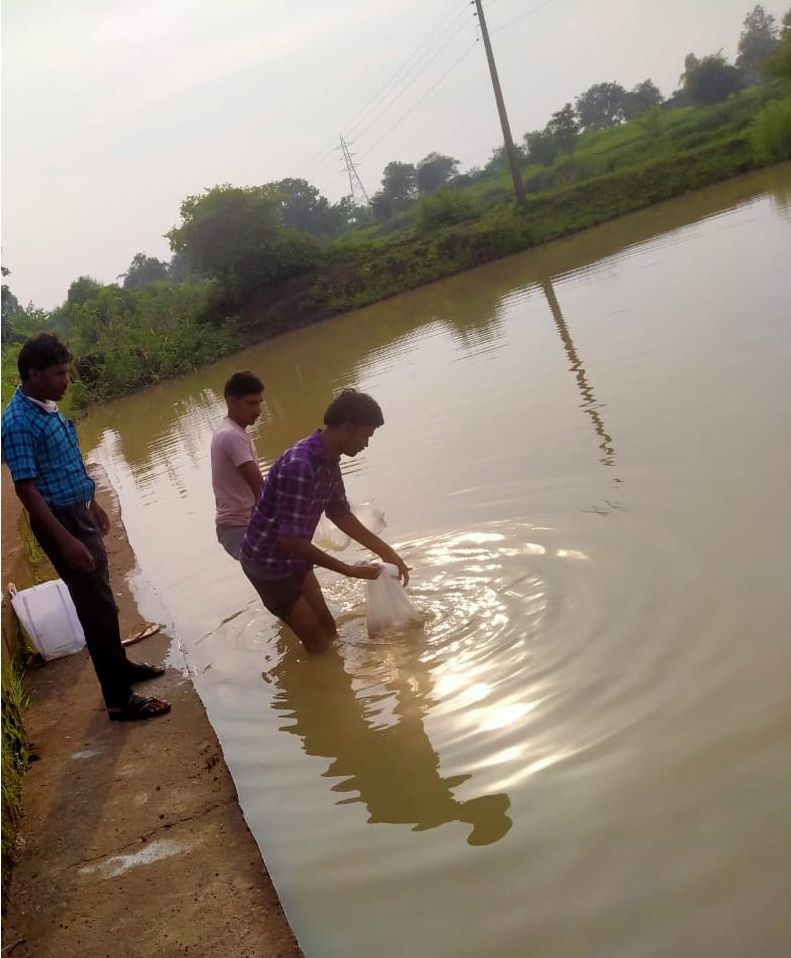
The total area under tanks and ponds in India is over 2.9 million hectares (Ministry of Jal Shakti, 2017). Tanks have traditionally been part of village landscape and these multiple-use structures have great significance in a village as a common source providing for sustenance, as well as, the livelihood of rural communities.
Outstanding engineering, hydrogeological, managerial and social skills of our ancients led to the creation of an extensive system of rainwater harvesting structures, in the form of tanks/taalabs, throughout the country. Most of these tanks and ponds are today in a state of disrepair and decay. After the British arrived in India, they shifted the ownership of tanks to the state, alienating the community from the resource.
After independence too, the use of tank systems has seen a decline due to continued government ownership. While the ownership of smaller tanks was transferred to gram panchayats, the devolution of power and roles was not done properly leading to their disuse and sub-optimal usage.
Taalabs or Tanks are a common property resource and need to be managed by the community as a collective to restore them to their past glory. Common-vested interest in the use of the resource can ensure its protection and sustainability. The tanks can also contribute towards augmenting the incomes of communities, as they offer multiple-use options. One such use is freshwater aquaculture managed by fishing cooperatives.
This article shares the experience of the Foundation for Ecological Security (FES) in strengthening management of water commons through the establishment of community-led fishing cooperatives in Mandla, a tribal district in Eastern part of Madhya Pradesh.
Water commons
FES initiated work on water commons in Mandla in 2012. The data on use, maintenance, management and control of the community water resources was collected through discussions in order to understand the status of the common water resource as well as the status of community governance.
The control and management of the community on the common water resource was found to be rather weak, despite the fact that the taalabs (village ponds) were used for domestic needs and livestock. In most cases, the control of the taalabs rested with the panchayats, but hardly any money was spent upon their maintenance which had led to multiple issues; such as heavy siltation reducing greatly the capacity of taalabs, breaching of the taalab weirs, loose embankments and needs of other structural repairs.
Many of the larger ponds were also additionally used for irrigation. Fishery was also a common activity, however; the activity was undertaken by either small groups or individuals. In many cases, the panchayats had leased the fishing rights to private contractors.
FES initiated dialogues on ‘commoning’ of water resources to improve the community stake in decision making, re-examine the tenurial arrangements of water and also communize the use and benefit-sharing from the resources.
As a result of these dialogues, the community highlighted the issue of fishing rights of the reservoir. FES initiated training on various legal aspects of the fisheries sector, and that the rules favour fishing cooperatives over private contractors was made known to the community. The organisation also worked with the village institution to initiate dialogue with the village leaders who wanted to retain control of the common talaab in some cases.
The process for setting fishing cooperatives
Post a series of dialogues with the community members and leaders on ‘commonizing village taalabs’, the community collectively decides upon whether to undertake fishing operations in the taalab. Post mutual consensus, the need of repair and desilting is assessed. Most often desilting is required which is undertaken by community through voluntary labour contribution or through excavators.
Post the revival of the physical structure, a fishing cooperative is formed comprising of interested households. The cooperative applies to the gram panchayat for obtaining leasing rights of the talaab for fishing. Post obtaining the relevant permissions and rights, the cooperative initiates fishing operations. Bye-laws and norms are formulated in a common meeting to ensure equitable benefit sharing and penalties for illegal fishing.

The impact
As of 2020, 51 villages of Mandla district have initiated community fisheries through the fishing cooperatives, where the entire village community is involved and is entitled to a share of the fish catch and profit. Ensuring reach to all the households in the village, it also aids in improving the nutritional intake of the families. Regular general meetings are held before the release of fish seeds in the taalabs, and before harvesting to collectively decide benefit-sharing mechanisms.
The average profit from the fishing activity for these community-based fisheries is Rs. 5000/cycle and the average yield of fish can be around 300kg/ hectare, if protected and managed well. Through the bylaws formed by the community, the fish is sold only in the village (not in the market), and at a lower rate than the market price. The money collected by the sale of the fish is then re-invested in purchasing fish seeds during the next season, thus making it a sustainable model.
Scale-up potential
Fishing cooperatives are an excellent way to rehabilitate the massive taalab and tank infrastructure at the country’s disposal as it provides the community with an incentive to manage these common-property resources. Freshwater aquaculture accounts for 55% of total fish production in India, and the country is the second-largest producer of inland fish in the world. (Food and Agriculture Organisation, 2018). This is when inland fishery is operating at just 10% of the existing potential.
A potential drawback is the low productivity of the sector, which may be attributed to the adoption of limiting approaches such as; the use of local feed options rather than specialized fish feed, lack of knowledge regarding proper fish seed selection, suboptimal harvesting timings and techniques. The training and capacity building of local communities is thus of crucial importance and this is where the role of facilitating NGOs, like FES, becomes critical for the success of the fishing cooperatives.
This case is part of the ‘Compendium of Best Practices: Water Management in Tribal Areas’, a document developed by AKRSP(I) and Axis Bank Foundation (ABF).
Author: Anjali Aggarwal is a researcher with seven years of experience in documenting and understanding the change brought by grassroots organizations working in rural parts of India. An alumnus of the Indian Institute of Forest Management, her interest areas are Conservation, Livelihoods, and Education. She likes bird watching and having a dialogue with rural community members.
/articles/managing-water-commons-through-fishing-cooperatives